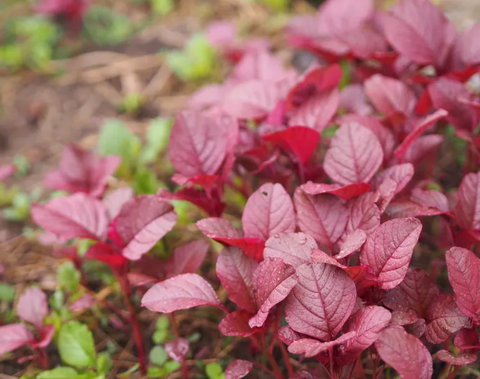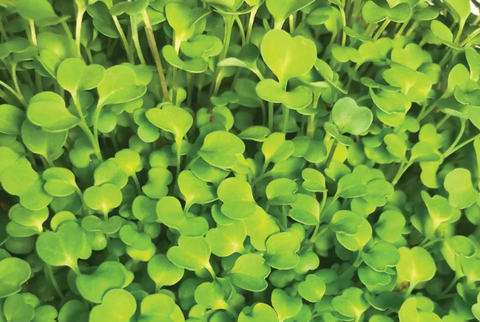Ready to infuse your garden with a burst of sunshine? Explore the boundless potential of sunflower seeds and unveil the secrets to cultivating pure joy in your garden. From the moment you plant these tiny kernels of potential, you set in motion a remarkable journey of growth and beauty. Witnessing the transformation from seed to towering sunflower is a captivating experience like no other.The following content also has some reference value for raised garden beds.

Imagine the delight of stepping into your garden and being greeted by a dazzling array of golden blooms, each one a testament to your nurturing care. Join us as we explore the art of cultivating happiness with sunflower seeds. Let's sow the seeds of joy together and watch as your garden blossoms into a radiant sanctuary of beauty and bliss.
The Fascinating History of Sunflowers
Ancient Origins of Sunflowers
Sunflowers have a rich history dating back to ancient civilizations, with evidence of their cultivation by Native American tribes as early as 3000 BCE. These resilient plants were initially grown for their nutritious seeds and oil.
Spread and Cultivation Across the Globe
From their origins in North and Central America, sunflowers gradually spread across the globe, reaching Europe in the 16th century thanks to Spanish explorers. Their popularity soared, leading to widespread cultivation for both ornamental and agricultural purposes.
Symbolism and Cultural Significance
Throughout history, sunflowers have symbolized adoration, loyalty, and vitality in various cultures. They have been featured in art, literature, and religious ceremonies, embodying the essence of resilience and optimism.
The Joy of Growing Sunflowers
Therapeutic Benefits of Gardening
Engaging in gardening activities, such as planting and nurturing sunflowers, can have profound therapeutic effects on mental well-being, reducing stress levels and promoting relaxation.
Sunflowers as Mood Boosters
The vibrant colors and towering stature of sunflowers evoke feelings of happiness and positivity, making them natural mood boosters for both gardeners and admirers alike.
Connecting with Nature
Cultivating sunflowers fosters a deeper connection with nature, providing opportunities for mindfulness and appreciation of the beauty and cycles of life.
Choosing the Right Sunflower Varieties
Determining Your Garden's Needs
Before selecting sunflower varieties, consider factors such as climate, soil conditions, and available space to ensure optimal growth and performance in your garden.
Considerations for Size and Space
Choose sunflower varieties that align with your garden's size and layout, whether you prefer compact varieties for small spaces or towering giants for a dramatic impact.
Exploring Different Colors and Petal Arrangements
Sunflowers come in a wide range of colors and petal arrangements, from traditional yellow petals with dark centers to striking bicolor and multi-flowered varieties, allowing for endless possibilities in garden design.
Preparing Your Garden for Sunflowers

Selecting an Ideal Planting Location
Choose a sunny location with well-drained soil for optimal sunflower growth, ensuring that they receive at least six to eight hours of direct sunlight daily.
Soil Preparation and Amendments
Prepare the soil by loosening it to a depth of 12 to 18 inches and incorporating organic matter such as compost or aged manure to improve soil fertility and drainage.
Sunlight and Watering Requirements
Monitor sunlight exposure and provide consistent watering, especially during dry periods, to support healthy root development and robust growth.
Planting Sunflower Seeds
Timing and Season for Planting
Plant sunflower seeds outdoors after the danger of frost has passed, typically in late spring or early summer, when soil temperatures have warmed to around 55°F (13°C).
Spacing and Depth Guidelines
Sow sunflower seeds directly into the garden soil at a depth of 1 to 1.5 inches (2.5 to 4 cm), spacing them 6 to 24 inches (15 to 61 cm) apart, depending on the variety's mature size.
Tips for Successful Germination
To promote successful germination, keep the soil consistently moist but not waterlogged, and protect emerging seedlings from potential threats such as birds and pests.
Nurturing Sunflower Seedlings
Providing Adequate Water and Nutrients
Continue to water sunflower seedlings regularly, ensuring that the soil remains evenly moist but not saturated, and fertilize periodically with a balanced fertilizer to support healthy growth.
Mulching and Weed Control
Apply a layer of organic mulch, such as straw or shredded leaves, around sunflower plants to conserve soil moisture, suppress weed growth, and maintain a more stable root zone temperature.
Protecting Seedlings from Pests and Diseases
Monitor sunflower seedlings for signs of pest infestations or disease, such as aphids, snails, or fungal infections, and take prompt action to mitigate damage using organic control methods.
Sunflower Care and Maintenance
Monitoring Growth and Development
Regularly monitor sunflower plants for signs of stress, nutrient deficiencies, or pest infestations, and adjust care practices as needed to promote optimal health and vigor.
Supporting Tall Sunflower Stalks
As sunflower stalks grow taller, provide support with stakes or trellises to prevent them from bending or breaking under the weight of heavy flower heads or adverse weather conditions.
Deadheading and Pruning Tips
Remove spent flowers (deadheading) regularly to encourage continuous blooming and prevent self-seeding, and prune away any damaged or diseased foliage to maintain plant cleanliness and vitality.
Harvesting Sunflower Seeds
Signs of Seed Maturity
Monitor sunflower heads for signs of maturity, such as drooping petals and a drying, browning disk, indicating that seeds are fully developed and ready for harvest.
Harvesting Techniques
Cut sunflower heads from the stalk using sharp pruners or scissors, leaving a few inches of stem attached, and shake out the seeds into a clean container for further processing.
Drying and Storing Sunflower Seeds
Spread harvested sunflower seeds in a single layer on a clean, dry surface to air dry for several days until fully dried, then store them in airtight containers in a cool, dark place for long-term storage.
Enjoying the Fruits of Your Labor
Decorating with Sunflower Bouquets
Bring the beauty of the garden indoors by creating stunning floral arrangements with freshly cut sunflowers, adding a touch of warmth and cheer to any space.
Cooking with Sunflower Seeds
Explore the culinary versatility of sunflower seeds by incorporating them into recipes such as salads, trail mixes, baked goods, and savory dishes, adding texture and nutritional value to your meals.
Sharing Your Sunflower Harvest with Others
Spread joy and generosity by sharing your bountiful sunflower harvest with friends, family, or local community members, brightening their day with nature's vibrant gifts.

Conclusion
In conclusion, cultivating sunflowers in your garden is not just about growing plants; it's about nurturing happiness, beauty, and connection with the natural world. By embracing the journey from seed to sunshine, you can experience the simple joys of gardening and reap the abundant rewards of your labor. So, why wait? Start your sunflower garden today and bask in the radiant glow of nature's golden ambassadors!









